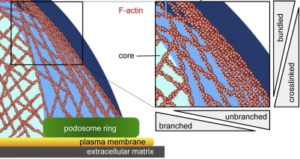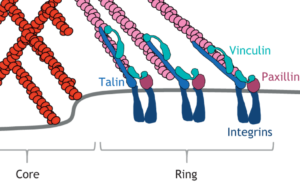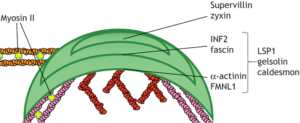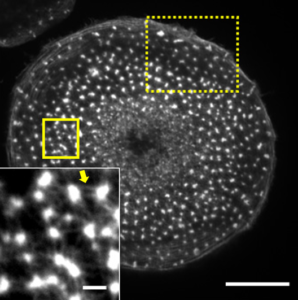|
Core |
 (Reference) |
 (Reference) |
Ring |
|
Cap |
 (Reference) |
- For more detailed information on podosome architecture and associated forces, see:
Probing the mechanical landscape (van den Dries et al., 2019)
- For more information on the discovery, architecture and function of the podosome cap, see:
The podosome cap: past, present, perspective (Linder&Cervero. 2020)

